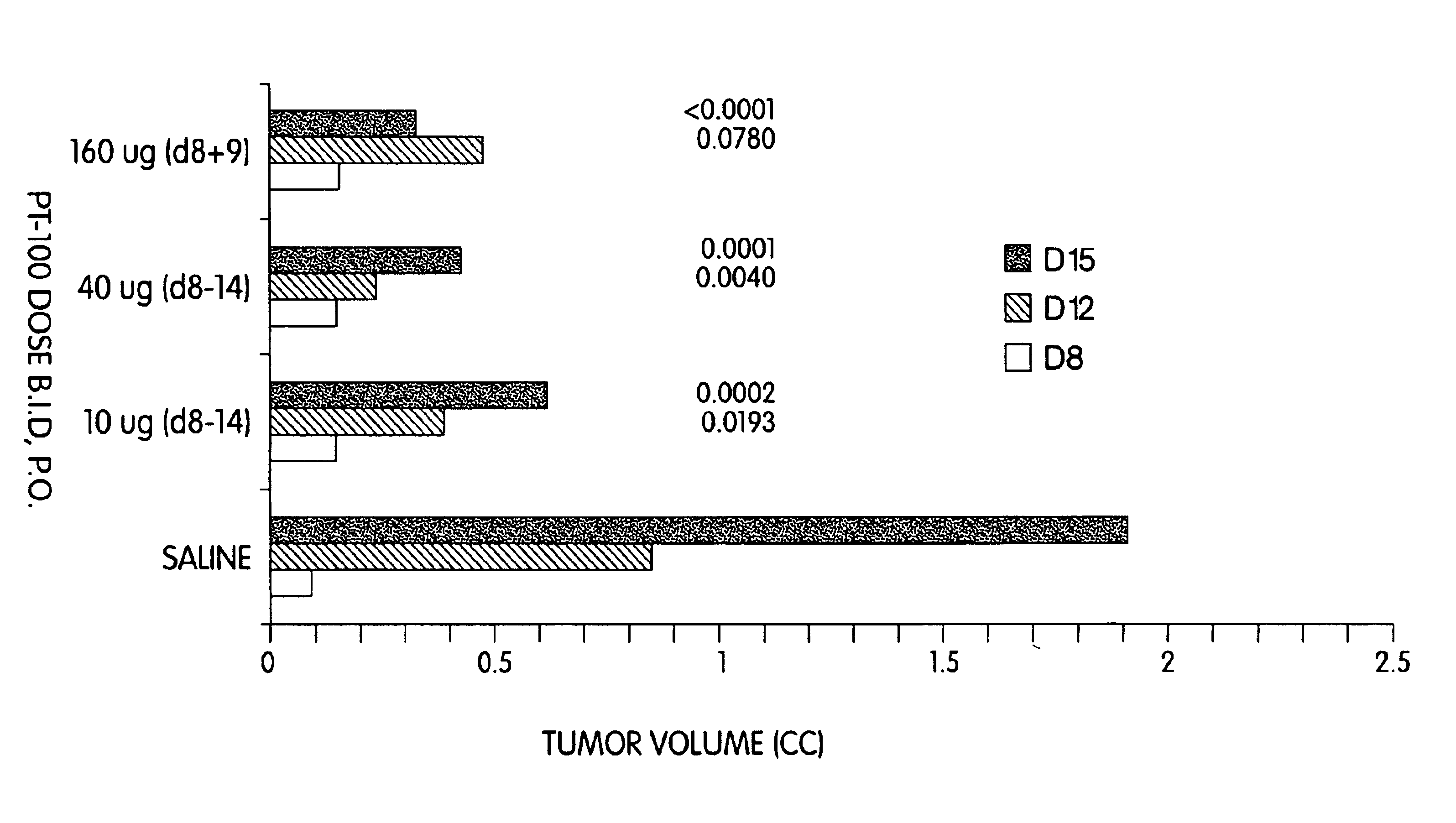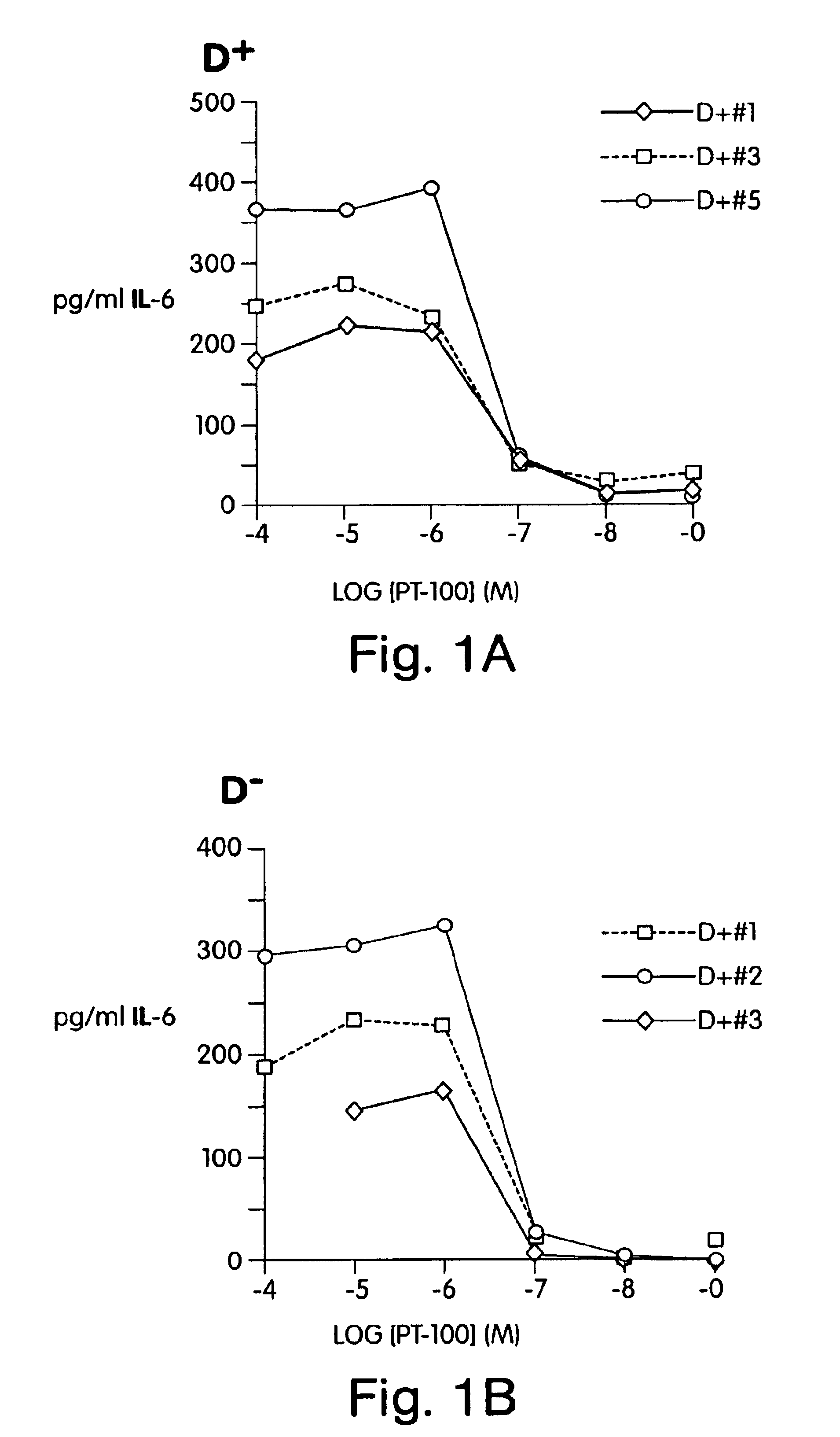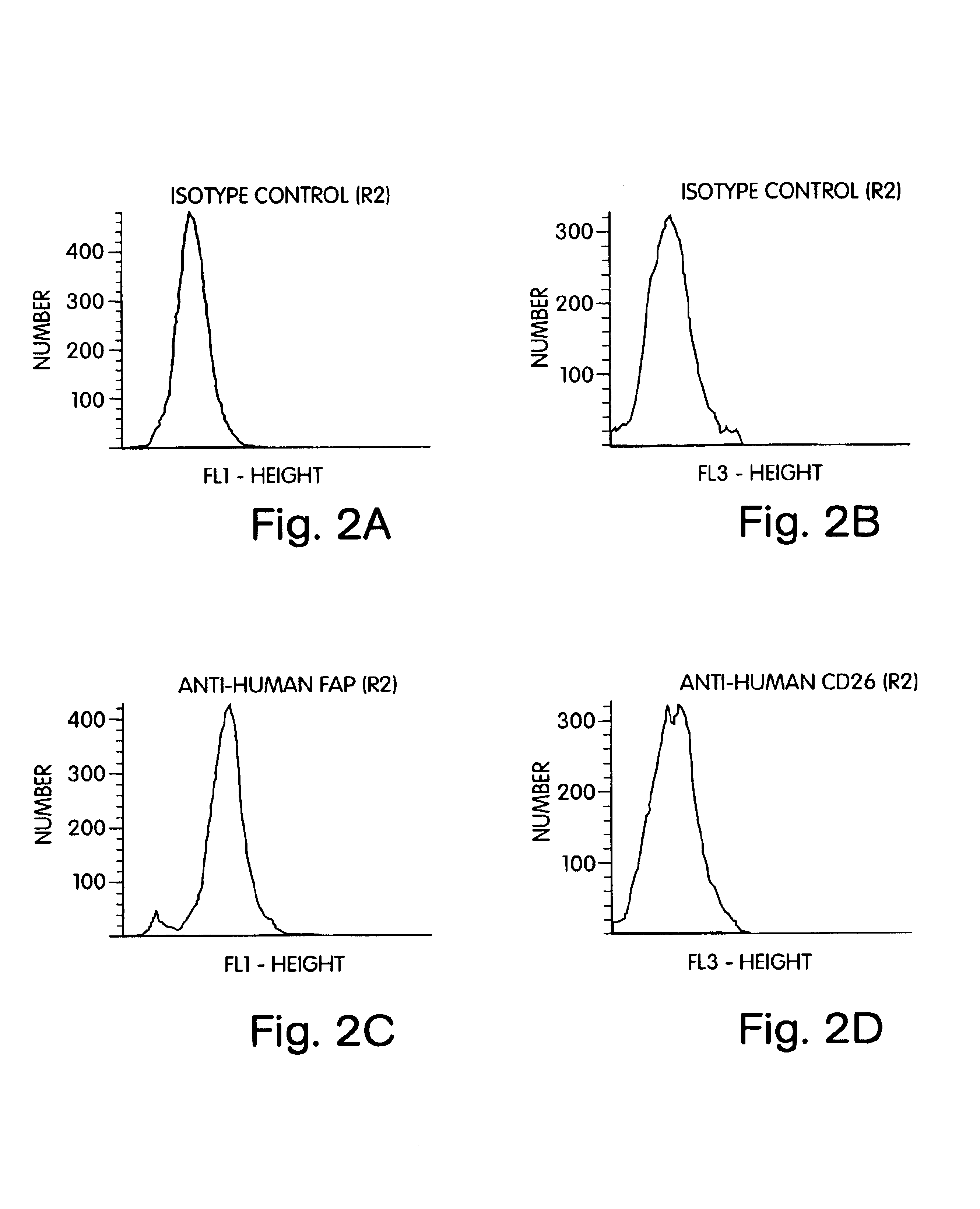Anti-tumor agents
a technology of anti-tumor agents and primary tumors, applied in the field of anti-tumor agents, can solve the problems of significant risk, health risk, and particularly problematic primary malignant tumors, and achieve the effects of inhibiting metastatic spread or growth, reducing the potential for systemic toxicity, and inhibiting the proliferation of primary tumors
- Summary
- Abstract
- Description
- Claims
- Application Information
AI Technical Summary
Benefits of technology
Problems solved by technology
Method used
Image
Examples
example 2
[0141]This example illustrates the anti-tumor activity of PT-100 (i.e., Val-boro-Pro) in mouse models.
[0142]PT-100 administered orally significantly inhibits the growth of both the B16 melanoma and the WEHI-164 fibrosarcoma in mice.
[0143]The highly metastic B16-F0 tumor was implanted subcutaneously (s.c.) in C57BL / 6 mice. PT-100 administration was started on day 8 when palpable tumors were apparent. Tumor volumes were measured on days 8, 12, and 15. The data are shown in FIG. 4. In mice treated with doses of 10 and 40 μg of PT-100 administered orally (p.o.), twice daily (b.i.d.) from day 8 to 14, tumor growth was markedly inhibited compared with the saline treated control mice. A higher dose of 160 μg PT-100 administered for just two days—day 8 and day 9—was also effective in suppressing tumor growth. In the experiment of FIG. 4 each experimental group contained 10 animals.
[0144]Similar experiments with the WEHI-164 fibrosarcoma demonstrated that PT-100 could suppress the growth of ...
example 3
[0145]The in vivo effects of the compounds of the invention can be assayed through various animal models known to those of ordinary skill in the art. Generally such assays involve the injection of a carcinoma cell line, of mouse or preferably, human, origin, into a cohort of mice. Following the passage of several days, as determined by the proliferative rate of the cell line, parameters such as tumor size, degree of metastasis and cellular infiltration into a region in the vicinity of the tumor site are evaluated. In most experiments, two groups of experimental mice are studied: a first, control, group which receives only the cell line but no agent of Formula I, and a second, test, group which receives at least one agent of Formula I such as PT-100. This second group is divided into several subgroups each of which receives a different dose of the agent, preferably between 10 μg and 100 μg per day for 10-20 days. On these days, the control group will be administered control doses con...
PUM
| Property | Measurement | Unit |
|---|---|---|
| emission wavelength | aaaaa | aaaaa |
| excitation wavelength | aaaaa | aaaaa |
| emission wavelength | aaaaa | aaaaa |
Abstract
Description
Claims
Application Information
 Login to View More
Login to View More - R&D
- Intellectual Property
- Life Sciences
- Materials
- Tech Scout
- Unparalleled Data Quality
- Higher Quality Content
- 60% Fewer Hallucinations
Browse by: Latest US Patents, China's latest patents, Technical Efficacy Thesaurus, Application Domain, Technology Topic, Popular Technical Reports.
© 2025 PatSnap. All rights reserved.Legal|Privacy policy|Modern Slavery Act Transparency Statement|Sitemap|About US| Contact US: help@patsnap.com



